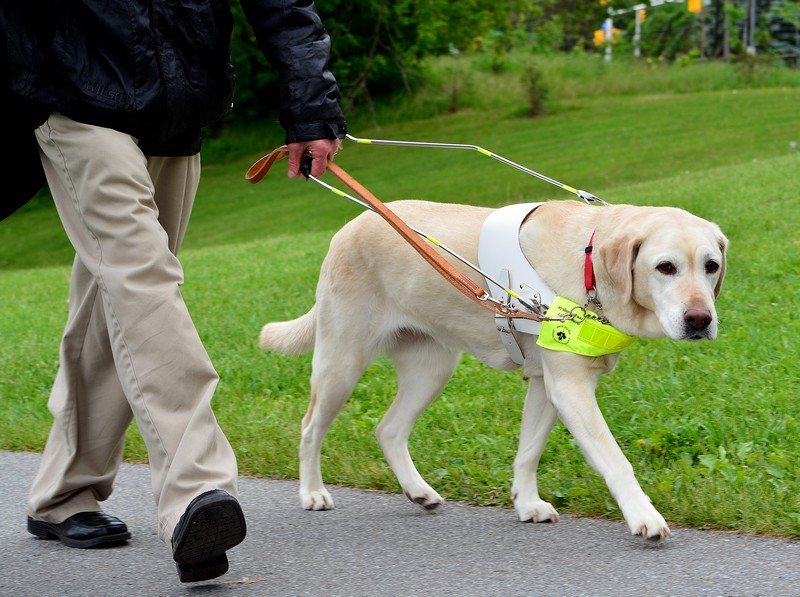Service animals, particularly guide dogs, occupy a significant and contentious position in contemporary discussions surrounding animal welfare and ethics. Although they provide indispensable assistance to individuals with disabilities, the implications of their training, labor, and treatment provoke critical evaluation. The inquiry into whether guide dogs are genuinely helping those they serve or inadvertently contributing to systemic ethical dilemmas provides fertile ground for dialogue.
At the heart of this discourse lies the fundamental purpose of guide dogs: to enhance the mobility and independence of visually impaired individuals. These dogs undergo rigorous training, typically extending over a period of months or even years, aiming to hone their intuitive abilities, sophisticated skills, and unwavering loyalty. Once matched with their human counterparts, guide dogs display remarkable situational awareness, enabling their partners to navigate complex environments safely. In this light, the contributions of these canines are undeniably positive; their assistance supports autonomy, promotes equal access, and enhances the quality of life for countless individuals.
However, the benevolent portrayal of guide dogs does not escape scrutiny. Critics argue that the extensive training and reliance on animals for such significant tasks raise ethical questions about the treatment of these animals. The expectations placed upon them can lead to undue stress and complications in their emotional welfare. For example, the training regimen often incorporates stringent behavioral conditioning that necessitates a high level of discipline. The implications of such training methods may inadvertently prioritize utility over the psychological and emotional well-being of the dog.
Furthermore, the guidelines and regulations governing the use of service animals present an ethical quagmire. There is a somewhat nebulous distinction between service animals, therapy animals, and emotional support animals, which contributes to misunderstandings that can jeopardize the welfare of the animals involved. Misidentification of a service animal could lead to situations where individuals falsely represent their pets as certified assistance animals. Such misrepresentation undermines the legitimacy of well-trained guide dogs while simultaneously diminishing the true needs of individuals with disabilities. The emotional toll this can take on both the handler and the animal involved necessitates a reevaluation of current regulations.
Another salient point of contention is the debate surrounding the lifetime commitment of guide dogs. Upon retirement, many guide dogs are faced with life-altering transitions. The once-active role they played often dissipates, leading to potential emotional upheaval for the animal. Some retired guide dogs may find themselves with companions who are unprepared to handle their unique behavioral needs. This situation raises questions about the responsibility of training organizations to ensure a stable, loving environment for their retired service animals.
The ethical implications of breeding practices for service dogs also warrant attention. Typically, specific breeds are favored for guide work due to their temperament, size, and physicality. However, intentional breeding for these traits can lead to health complications within certain breeds, such as hip dysplasia and other genetic disorders. Additionally, prioritizing certain breeds over others neglects the potential of mixed breeds who may possess the desired qualities for guide work. Thus, embracing diverse, less stereotypical breeds might represent a more humane approach to fulfilling the needs of individuals who rely on these animals.
Moreover, the societal perception surrounding service dogs often places undue pressure on these animals. Public expectations may lead to situations where animals are placed in scenarios that could elicit anxiety or fear, directly contradicting their training purpose. Instances of public ignorance regarding service animal protocols abound, resulting in stressors that could affect both the emotional and physical health of the guide dog. This emphasizes the need for more extensive public education about the role of service dogs, their rights, and their humane treatment.
Despite these concerns, the intrinsic bond that develops between a guide dog and its partner is a testament to the profound connection that can exist across species. This relationship underscores the potential for animals to enrich human lives beyond mere utility. Animals have the capacity for empathy, understanding, and emotional companionship, which can often transcend the mechanical roles envisioned for them. The training, though intensive, can harness this innate ability, forging a partnership that is mutually beneficial when approached with respect and care.
In the pursuit of a humane approach to service animals, stakeholder dialogue is essential. Organizations responsible for training and certifying guide dogs must prioritize the well-being of their animals throughout their working lives and into retirement. This includes ensuring a smooth transition for retired guide dogs, educating the public on service animal etiquette, and advocating for legislative reforms that protect both the rights of handlers and the welfare of animals.
Ultimately, the discourse surrounding guide dogs encapsulates the broader ethical discussions within the domain of animal rights and welfare. It compels us to reflect on the responsibilities we bear as a society toward those creatures that serve humanity. Only through conscientious efforts can we ensure that our service animals are truly helpers in the truest sense, rather than subjects of exploitation and ethical dilemmas. The intertwining of these complex issues invites continued examination and dialogue to strive for a future where both the needs of individuals with disabilities and the inherent rights of animals coexist harmoniously.







